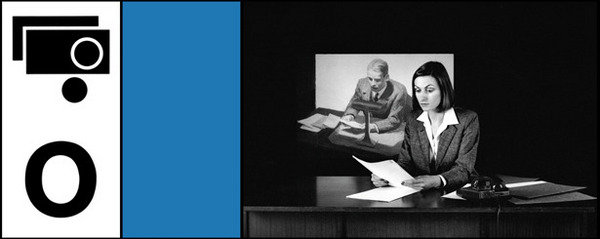Victor Burgin
dal 22/3/2014 al 14/6/2014
Segnalato da
22/3/2014
Victor Burgin
Museum fur Gegenwartskunst, Siegen
Forms of Telling. An impressive range of works, from early photo-text pieces such as 25 Feet Two Hours (1969) or US 77 (1977) to photography series from the 1980s such as Office at Night (1985-86) to the most recent work Occasio (2014), which was created specifically for this exhibition.

How can the suggestive power of images be activated? What effect is generated by the conjunction of images and text? How do the images of our own memory interrelate with images from cinema or art history?
These are questions that the artist and theorist Victor Burgin (born 1941 in Sheffield, England) has been working on for more than four decades. Burgin's interest is focused on how while viewing photographies memories and associations are generated. In connection to this he examines the forms and methods of narration. Political aspects as well as themes from gender studies flow into his art and writing. Burgin's work is influenced by theorists and philosophers such as Sigmund Freud, Michel Foucault, Karl Marx, or Roland Barthes. He sees himself within a semiotic, historical, and psychoanalytic context.
The exhibition “Victor Burgin. Forms of Telling” in the Museum für Gegenwartskunst Siegen is the first comprehensive retrospective of the artist’s oeuvre in a German museum. On 900 square meters the exhibition covers an impressive range of works, from early photo-text pieces such as 25 Feet Two Hours (1969) or US 77 (1977) to photography series from the 1980s such as Office at Night (1985-86) to the most recent work Occasio (2014), which was created specifically for this exhibition. One of the thematic focus points of the exhibition is on recent video pieces; next to Occasio these are Mirror Lake (2013), A Place to Read (2010), and Dovedale (2010).
As one of the very first Concept Artists Victor Burgin participated in the two legendary exhibitions Live in Your Head: When Attitudes Become Form (1969) and Information (1970). His serial-photography pieces from the late 1960s and early 1970s, in which Burgin combined photography and text in his own distinctive way, are some of the canonical pieces of Concept Art. The artist's use of inner monologue may be as important as the connection between an inner idea and the external world. These discontinuing encounters between images and narrative threads are one thing, suggestive of surrealism and dreams, but his work is also political in an extremely up-to-date sense.
Victor Burgin reacts to places and situations, to the cities in which he is invited to exhibit. He describes his approach as follows: “My photography and video pieces are reactions to the places – mostly cities – to which I am invited. When I work, I follow the path of my associations, of my spontaneous thoughts. I often notice that my sojourn at a specific place calls to mind another place or a book, a film, or a personal memory.”
The conceptual photography-text works from the late 1960s have been followed by digital video works since the 1990s. Presently, Burgin is occupied with 3-D computer modelling.
Viktor Burgin ( born 1941 in Sheffield, England, lives in France) studied at the Royal College of Art, London, and at Yale University.
He has taught at the University of California in Santa Cruz and since 2001 is a professor at Goldsmith College, University of London. He has also held guest professorships at the European Graduate School in Saas-Fe, Switzerland and at the Sorbonne in Paris.
Burgin's works are part of numerous outstanding public collections, such as the MOMA and in the Metropolitan Museum of Modern Art in New York, in the MOCA L.A., in the Tate Modern, London, and in the Centre Pompidou, Paris.
Major theoretical publications include : “Parallel Texts: interviews and interventions about art” (2011), “Situational Aesthetics” (2009), “The Remembered Film” (2004), “In/Different Spaces: place and memory in visual culture” (1996), “The End of Art Theory: criticism and postmodernity “(1986), “Thinking Photography” 1(1982).
Exhibition Catalogue
The publication accompanying the exhibition documents meticuously Burgin's five recent video pieces, commented by the artist. The volume also includes a text by Hanne Loreck and an afterword by Eva Schmidt, German-English, Verlag Sternberg Press.
This exhibition is generously sponsored by:
Kunststiftung NRW and Freundeskreis des Museums
The Educational Program „Kunstboten“ is sponsored by the Zonta Club Siegen Area.
The Museum für Gegenwartskunst Siegen is a Cultural Partner of radio station WDR3.
Image: Office at Night, 1985–86. © Victor Burgin. Courtesy Thomas Zander Gallery, Cologne.
Press contact:
Stefanie Scheit-Koppitz scheit-koppitz@mgk-siegen.de
Press Conference: Friday, March 21, noon
Opening: Sunday, March 23, noon
Museum für Gegenwartskunst Siegen
Unteres Schloss 1 57072 Siegen
Hours:
Daily 11 - 6
Thursday 11 - 8
Monday closed
Open on holidays
Admission
Adults 5.90 €
Reduced 4.60 €



